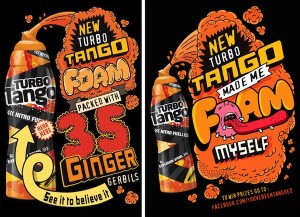Soft drinks are being pushed and shoved from every corner – energy drinks at one, coconut water and iced teas at another, juices at a third, bottled water at the fourth. And it shows.
According to the latest Australian Beverage Trends Report (June 2014), total sugar contribution from soft drinks has dropped by around a quarter (26%) for each person over the past 15 years and consumption of soft drinks has fallen from 84 litres per person in 2006 to 72 litres per person in 2011. [Levy G.S., Shrapnel W.S. (2014) Quenching Australia’s thirst: a trend analysis of water-based beverage sales from 1997 to 2011. Nutrition & Dietetics.]
Australia’s statistics are similar to those of America and most other first world countries. Only developing countries are showing encouraging signs for the sector’s future growth.

It seems to be stating the obvious that soft drink has a bad health reputation that it cannot overcome. And while ‘natural’ soft drinks, drinks sweetened with stevia, and coconut water are a few alternatives that now are being promoted by major vendors such as Nestlé, PepsiCo and Coca-Colato to capture more health-conscious consumers, it also seems obvious that stopping the decline of soft drinks will not come from changes within the product itself, but may come from how it is delivered.
A new report by TechNavio has turned this supposition into a statement. Innovations in packaging will boost revenue in the global soft drinks market, the new TechNavio report stated.
According to the report, packaging innovations will be a major trend expected to impact overall market growth to 2018. Most of these innovations are centered on providing convenience for on-the-go consumption. It also expects the global soft drinks market is to post a CAGR of 3.92% in terms of revenue from 2014-2018.
Faisal Ghaus, vice president of TechNavio, remarked, “Vendors in the market often struggle with brand visibility and uniqueness in such an oversaturated market. Differentiating products through creative packaging materials and accessorized packaging is one way to help push products and gain a wider consumer base.”
A global consumer goods packaging and contract manufacturing company called Colep is the first to bask in the attention this report has generated. Colep won the British Aerosol Manufacturers' Association (BAMA) award on 11 October in the Economic and Sustainability category, for developing a wildly innovative aerosol soft drink, Turbo Tango, by Britvic. Colep operates in Portugal, Brazil, Germany, Poland, Spain, United Arab Emirates, the United Kingdom and, following its acquisition of an aerosol facility in Querétaro, Mexico, now also services North America.
Turbo Tango is a new take on Britvic’s iconic Tango fizzy orange canned drink. The Colep plastic aerosol can delivers it in the form of an aerosol-created foaming drink, applied directly into the mouth. The product is aimed at the teen market, which tends to respond with the greatest enthusiasm to new ideas.
Colep was presented with the award for its innovative approach, development support, and creation of bespoke manufacturing equipment, developed to fill and pack the breakthrough plastic aerosol.
Specific valve crimping techniques were developed by Colep’s facility in Vale de Cambra, Portugal, in order to create the robust filling required for the plastic aerosol. Colep also worked with Britvic to ensure all necessary controls and legislative requirements were met throughout the process.
Managing director of Colep’s product supply group, Dr Jens Peter Wulf stated, “…this product paves the way for many more exciting applications in plastic aerosols, and we anticipate future growth in this pack format.”
Canadean's April report, Market Focus: Trends and Developments in the Soft Drinks Sector in the UK, discusses both the obstacles and opportunities first world markets are presenting to soft drink manufacturers.





